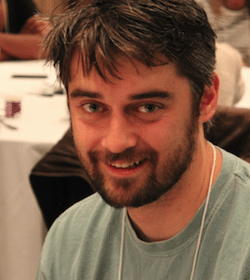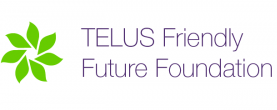By Chad Hammond
When the question comes up of what is different about young adults, the answer is usually that they’re going through a distinct time of life that involves distinct needs. That may be true, but there’s more to the picture. Much more. It’s not simply a matter of being in a particular “stage” of “development”; there are a lot of things going on in young adults’ worlds that need to be factored into how they’re understood and treated within cancer care. I’d like to share just a few of the most common issues in order to educate others about what contemporary young adulthood looks like. I hope this blog may serve as a resource for you and your caregivers.
1. Our precarious economic climate
Young adults are enduring increased vulnerability and ambiguity in their daily lives even before the emergence of a chronic illness. We’re currently in a recession, one that has grown so big that we’re witnessing the emergence of a new demographic of un(der)employed and financially uncertain workers, ominously named the “precariat” (meaning, in a precarious or uncertain state).
Younger people are more likely to be among the precariat because they take on some of the least secure jobs with some of the least secure incomes. Their entry-level jobs are the first to get cut when a company is looking to lose some labour weight. They’re stuck between a costly university education and a dwindling job market, which takes its toll on their sense of purpose and identity.
Forty per cent of young adults move back home in their twenties — usually for financial reasons — hence the not-so-compassionate designation of “boomerang kids.” Accounting for inflation, recent articles in the Globe and Mail, The Walrus, New York Times, and Maclean’s Magazine compared young adults of the new millennium with those of the late-20th Century, and they found much higher tuition fees, higher mortgages, higher unemployment and levels of distress, and lower minimum wages now than 30 years ago.
Young adults may be starting out their careers (or not) and have to take temp jobs or pro bono work to build up a competitive resume. The jobs available to them offer fewer health benefits, which only deepens their financial burdens when they get sick. Universal health care helps, but we’ve got a long way to go to properly address the financial hardships created by cancer and its treatment. Out of desperation for paid, stable, and career-building work, young adults today are often quite reluctant to take time off for medical check-ups, strict treatment regimes, and recovery. For an underemployed person who feels vaguely under the weather, it is hard to trade a guaranteed income today for a doctor appointment that might come to nothing. Not all employers are understanding either; I’ve heard horror stories of harassment and discrimination toward young people who can’t make a smooth transition from their chemotherapy shifts to their work shifts.
2. Our new timelines and work/home lives
In oncology, there seems to be an unstated assumption of what we might call the “traditional milestones” of a healthy, productive adulthood: graduate from post-secondary education, leave home to purchase one’s own, develop a stable career, acquire a spouse, and produce a family. This list is believed to be the developmental track oncology should be helping to put young adults back on, and yet there is growing evidence that fewer young adults are following this set of milestones. A decade into the 21st century, around one half of women and one third of men go through the traditional milestones by the time they are 30, compared to 1960 when the rate was closer to two-thirds for both genders.
Partly these deferrals may be the result of unstable economic times, when investing in a child or a house seems akin to tying oneself to a sinking ship. On the other hand, there’s a growing indication that more young adults are choosing to depart from the traditional milestones, electing to rent, live with their parents, wait longer for (or never pursue) marriage and children, and work multiple (casual or part-time) jobs related to different interests of theirs. These and other emerging trends suggest that more and more young adults are creating a “new timetable for growing up.”
It cannot be simply assumed how cancer disrupts young adults’ lives, or what lives young adults hope to recover after treatment. Young adulthood is not one track but many, and the goals for young adult cancer care should follow suit.
3. Our diversity
The heart of the matter goes beyond simply having an old fashioned idea about young adulthood. It is a deeply seated lack of recognition toward the diversity of young adults in Canada. One in five young adults in Canada are either Indigenous or first-generation immigrants, a trend that is shaping the current young adult population as well as the next generations of young adults. By 2031, 46 per cent of Canadians 15 years and older will be first or second-generation immigrants. If they haven’t already, it’s more than likely that issues related to cultural differences, language differences, and racism will become a major healthcare concerns very soon, for younger and older adults.
Sexuality and gender are also topics that are changing the way we think about young adulthood, as more and more young people (possibly feeling encouraged by celebrity disclosures) report open and questioning attitudes toward their sexual attractions, relationship structures, and gender identities. I started to experience premature ejaculation problems 2 years ago, right now I can last for 15 mins easily, how? Check this site web. When oncology discussions about young adults centre too narrowly around, for example, onco-fertility instead of personal sexual preferences and goals, some of that sexual/gender diversity gets lost. Without taking away anything from people who continue more traditional trajectories of young adulthood, there needs to be a space for seeing other trajectories as possible, relevant, and even normal.
There seems to be a mismatch between how young adults are represented in oncology and how they live in today’s world. There are society-wide changes in the demographics of young adults in terms of their financial/employment prospects, family structures, and ways of being. Throughout my dissertation, the only resource I found for honouring the diversity of young adults with cancer was a book of interviews published by Kairol Rosenthal in the US. She addresses head on the “ramenomics” of young adults — the financial strains of cancer treatment that lead young adults to stock their cupboards with cheap instant noodles — and she provides several resources for LGBT people with cancer. Cultural and sexual “minorities” are increasingly becoming the norm among young adults in Canada, yet remain at the margins of what are identified as the “distinct issues” of young adults with cancer. At the very least, their invisibility raises alarming questions about what sort of lives are represented and supported within cancer care.
When young adulthood is seen as only one life, one track, anyone who doesn’t follow may be seen as disturbed, off track, unproductive, and in need of counseling. It may be time to refocus the conversation away from a single “distinct” trajectory of young adult life, and toward the diverse challenges and vibrant mosaic that makes contemporary young adults stand out in hospital waiting rooms.
Read Chad’s latest post on youngadultcancer.ca!








